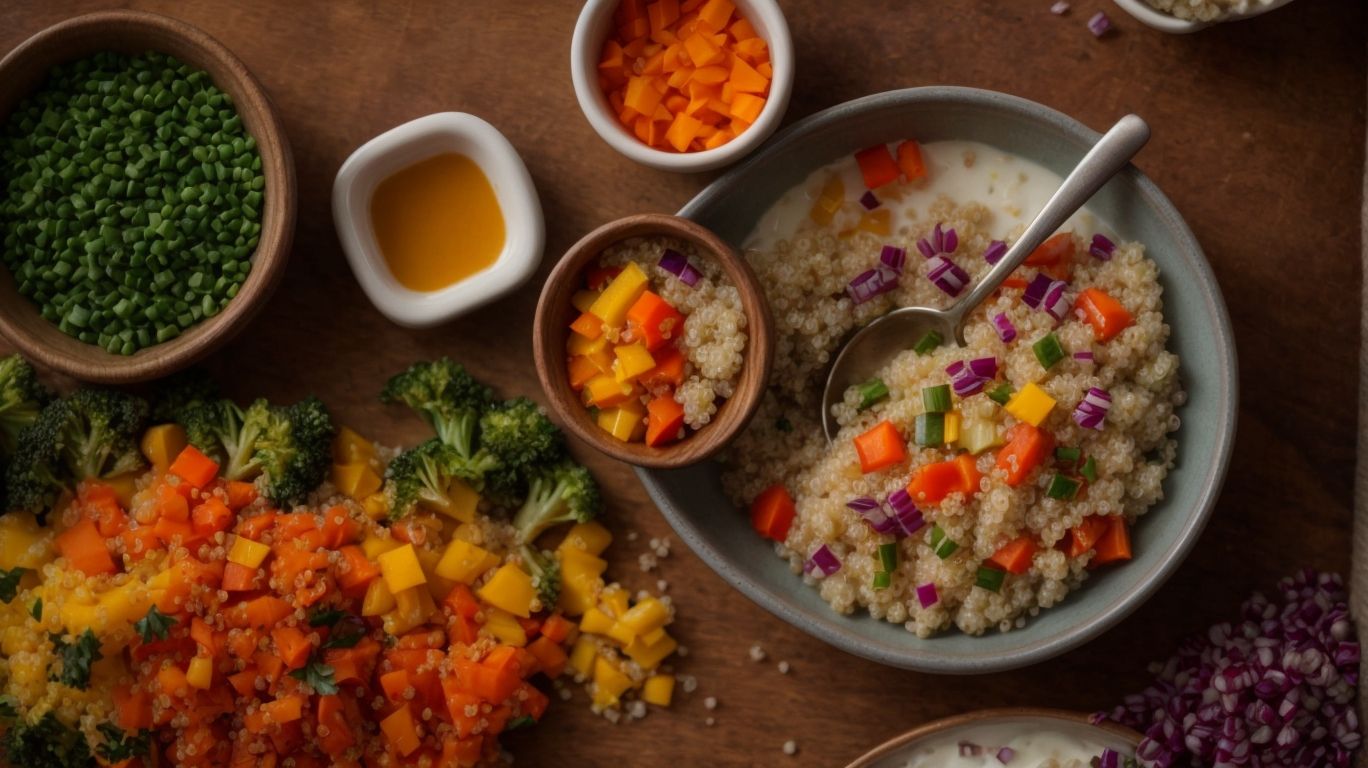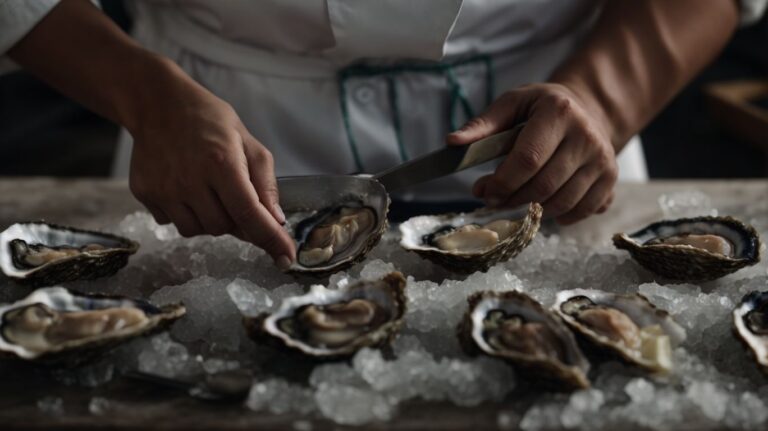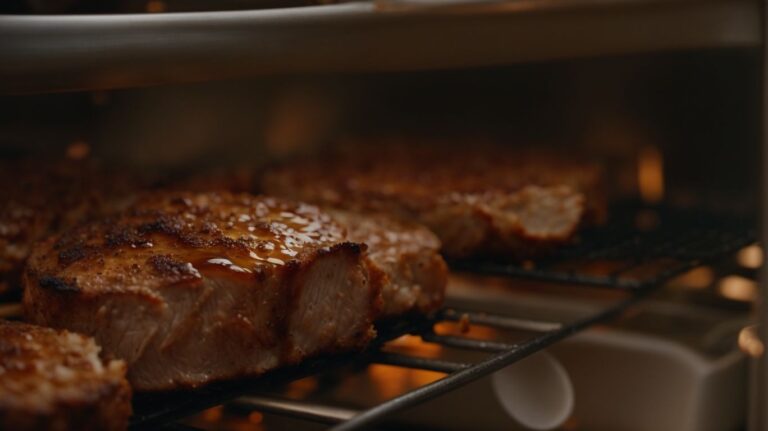How to Cook Quinoa for Baby?
If you’re a parent looking to introduce your little one to nutritious and delicious foods, quinoa is a fantastic choice.
We will explore why quinoa is a good food choice for babies, when babies can start eating quinoa, and how to cook quinoa for your little one.
From rinsing the quinoa thoroughly to choosing the right cooking method, we’ve got you covered.
Discover the different ways to serve quinoa to babies and the nutritional benefits it offers.
Key Takeaways:
Why Quinoa is a Good Food Choice for Babies?
Quinoa is an excellent food choice for babies due to its high protein content, essential nutrients, and overall health benefits.
For babies who are transitioning to solids or need a boost in their diet, quinoa provides a powerhouse of nutrition. It is a complete protein source, containing all nine essential amino acids crucial for growth and development. Quinoa is rich in iron, magnesium, and fiber, promoting healthy digestion and nutrient absorption in babies. This superfood is also gluten-free, making it a safe and nutritious option for babies with gluten sensitivities or allergies.
When Can Babies Start Eating Quinoa?
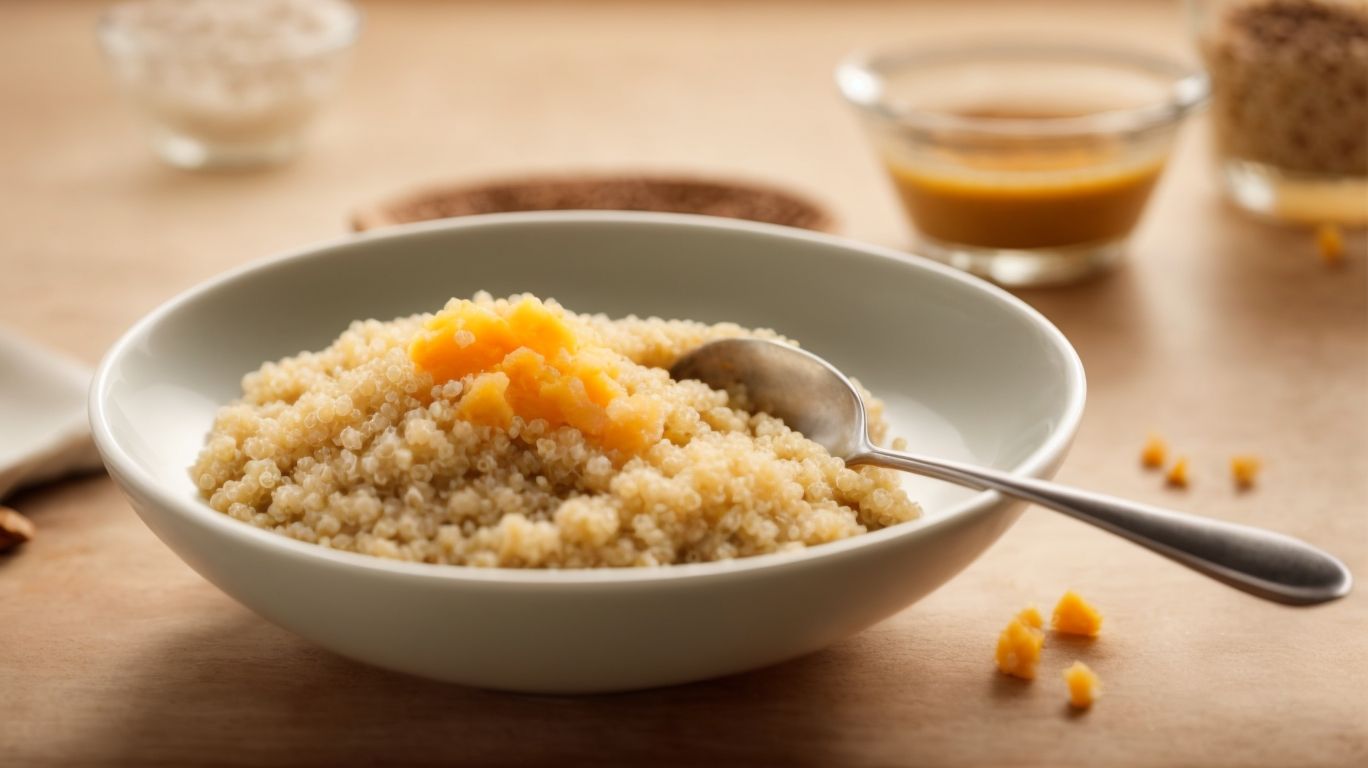
Credits: Poormet.Com – Scott Lopez
Babies can start eating quinoa when they are ready to transition to solid foods, usually around 6 to 8 months of age.
Introducing quinoa to babies is a fantastic way to enhance their nutritional intake as it is packed with essential vitamins and minerals such as iron, magnesium, and fiber. Quinoa is also a great source of plant-based protein, making it a valuable addition to their diet. It is crucial to prepare quinoa properly for babies by cooking it until soft and ensuring it is well pureed or mashed to prevent any potential choking hazards. As with any new food, it is recommended to introduce quinoa gradually in small portions to monitor for any potential allergies or digestive issues.
How to Cook Quinoa for Baby?
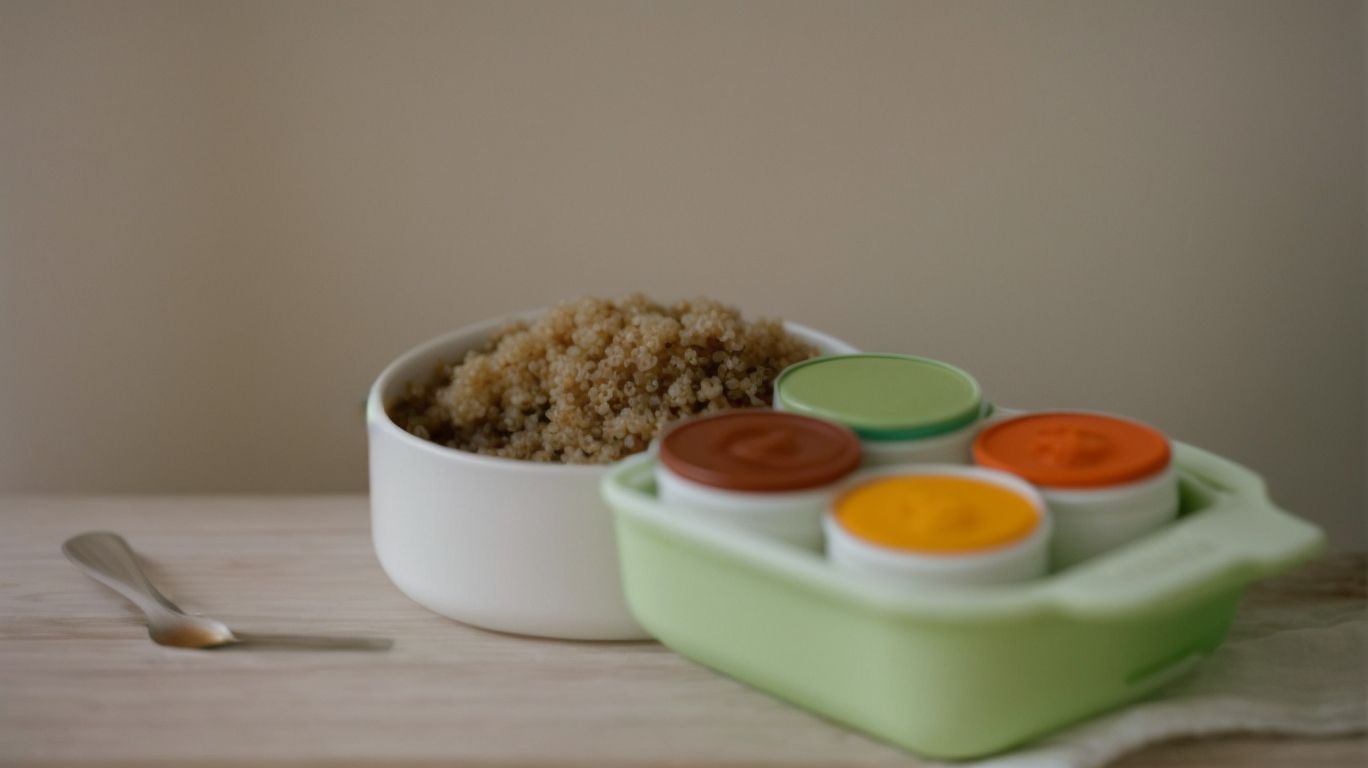
Credits: Poormet.Com – Charles Rivera
Cooking quinoa for babies involves specific steps to ensure a suitable texture and flavor for their palates.
To start, rinse the quinoa thoroughly to remove any bitterness. Then, use a 2:1 water to quinoa ratio for cooking to achieve a nice, fluffy consistency. Cooking time may vary depending on the type of quinoa you choose – white, red, or black.
Once cooked, allow the quinoa to cool before serving to your little one. You can introduce flavor by mixing pureed fruits like apples or bananas into the quinoa. For older babies, you can also try adding a pinch of cinnamon or nutmeg for a gentle flavor boost.
Rinse the Quinoa Thoroughly
Before cooking quinoa for babies, it is essential to rinse the grains thoroughly to remove any bitterness or residue.
Rinsing quinoa is a crucial step in ensuring a clean, appetizing final dish. When quinoa is harvested, it is coated with a bitter-tasting compound called saponin, making it important to wash it off before cooking. This simple step not only improves the taste of the dish but also aids in digestion.
Cooking tips suggest placing the quinoa in a mesh strainer and rinsing it under cold running water, gently rubbing the grains together. Repeat this process until the water runs clear to ensure all saponin is removed.
Choose the Right Cooking Method
Selecting the appropriate cooking method is crucial when preparing quinoa for babies, ensuring optimal texture and nutritional value.
One popular method is boiling quinoa, which softens the grains while maintaining their unique texture and nutty flavor. To enhance its taste, consider cooking quinoa in vegetable or chicken broth instead of water.
Another option is steaming quinoa, which helps retain its nutritional content better than boiling. You can also try toasting quinoa before cooking to deepen its flavor profile.
When making quinoa for babies, ensure you cook it thoroughly to achieve a porridge-like consistency for easier digestion. Experiment with different combinations of fruits, vegetables, and spices to create a flavorful and nutritious recipe that your little one will enjoy.
Add the Right Amount of Liquid
Maintaining the correct liquid-to-quinoa ratio is essential for achieving the desired texture when cooking quinoa for babies.
Quinoa is a nutrient-dense, gluten-free grain that is packed with protein, making it an excellent choice for your baby’s diet. When preparing quinoa, remember that using the right amount of liquid is crucial to ensure a fluffy and tender result. A common ratio to follow is 2 cups of water or broth for every 1 cup of quinoa. You can adjust this ratio slightly to suit your preferences for softer or firmer quinoa. Experimenting with different liquids like broth or coconut milk can also add depth of flavor to your quinoa dishes. By mastering the liquid proportions in your quinoa cooking, you can create delicious and nutritious meals for your little one.
Cook the Quinoa Until Tender
Cooking quinoa until it reaches a tender consistency is key to ensuring that it is easily digestible for babies.
To achieve this perfect texture, start by rinsing the quinoa under cold water to remove any bitterness. Then, in a medium saucepan, combine one part quinoa with two parts water or broth. Bring it to a boil, reduce the heat, cover, and let simmer for about 15 minutes or until the quinoa absorbs all the liquid and becomes fluffy. Remember not to overcook it to maintain a slightly firm texture suitable for baby consumption. Once cooked, fluff it with a fork and let it cool before serving to your little one in a baby-friendly quinoa recipe.
Let the Quinoa Cool Before Serving
Allowing cooked quinoa to cool before serving helps in preserving its texture and makes it safer for babies to consume.
When quinoa is hot, it can have a mushy texture, but as it cools, it firms up and maintains that pleasant slightly crunchy bite. This cooling process also helps prevent the growth of bacteria, especially for sensitive individuals like babies, ensuring their safety.
For serving suggestions, you can mix cooled quinoa with fresh vegetables, herbs, and a drizzle of lemon vinaigrette for a nutritious quinoa salad. Alternatively, you can incorporate cooled quinoa into baby-friendly purees or mix it with mashed fruits for a tasty and wholesome meal option.
What are the Different Ways to Serve Quinoa to Babies?
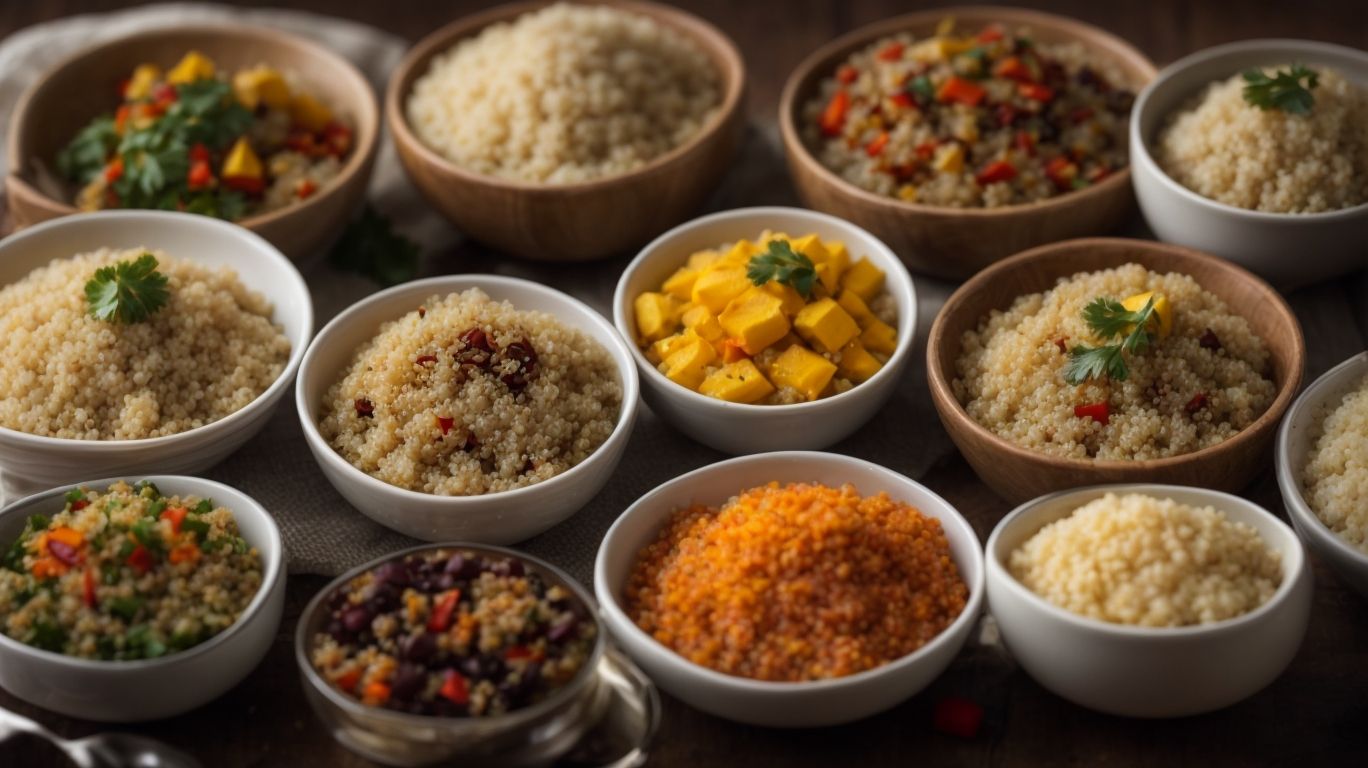
Credits: Poormet.Com – Christian Jones
There are various creative ways to serve quinoa to babies, including pureeing, blending, and incorporating it into different recipes.
Regarding pureeing quinoa, you can cook it until it’s very soft and then use a food processor or blender to make a smooth puree. This can be mixed with fruits like bananas or apples for added flavor and nutrition.
Blending quinoa into smoothies is another fantastic option. You can mix cooked quinoa with yogurt, milk, or fruit juice, along with some fruits like berries, to create a delicious and nutritious smoothie that babies will enjoy.
For a more diverse approach, consider incorporating quinoa into baby-friendly recipes like quinoa porridge, quinoa and vegetable mash, or even quinoa pancakes. These options provide a variety of textures and flavors to keep your little one interested in this superfood.
Pureed Quinoa
Pureed quinoa offers a smooth and easy-to-digest option for introducing this nutritious grain to babies.
When pureeing quinoa for babies, start by rinsing the quinoa thoroughly to remove any bitterness. Then, combine it with water or a mild broth and cook until soft. Once cooked, transfer the quinoa into a blender and blend until you achieve a smooth consistency, adding more liquid if needed.
This puree is rich in protein, fiber, and essential nutrients, making it an excellent choice for your little one’s diet. You can also enhance the flavor by mixing in fruits like apples or bananas, or vegetables like sweet potatoes or peas, providing a variety of tastes and textures for their developing palate.
Quinoa Porridge
Quinoa porridge is a delightful breakfast or lunch option for babies, providing a nutritious and flavorful meal.
It is a versatile dish that can be easily customized to suit your baby’s taste preferences. To prepare quinoa porridge, start by rinsing the quinoa thoroughly to remove any bitterness. Then, cook it in water or milk until it is soft and creamy. You can add mashed fruits like bananas or berries for sweetness and extra nutrients.
For a breakfast variation, consider mixing in a bit of cereal or yogurt to make it more filling and satisfying. As a lunch option, you can stir in some pureed vegetables like sweet potatoes or carrots to introduce different flavors and textures.
Quinoa Cereal
Quinoa cereal is a versatile and textured choice for babies, suitable for transitioning to finger foods.
When preparing quinoa cereal for babies, it’s essential to ensure the right consistency to make it suitable for their delicate palates. To achieve the perfect texture, cook the quinoa until it is soft but still has a slight firmness to allow babies to grasp it easily. Consider mashing or blending the cooked quinoa to create a smooth, creamy cereal that is gentle on your little one’s gums.
As a finger food, quinoa cereal offers a wonderful opportunity for babies to explore different textures while developing their fine motor skills. Its small, soft grains make it easy for tiny fingers to pick up and self-feed, promoting independence during mealtime.
Quinoa and Vegetable Mash
Combining quinoa with vegetables in a mash offers a nutrient-rich and flavorful option for introducing varied tastes to babies.
When preparing a quinoa and vegetable mash for babies, it’s important to start by rinsing the quinoa thoroughly to remove any bitterness. Then, cook the quinoa according to package instructions until it’s soft and fluffy.
Meanwhile, chop a variety of vegetables such as carrots, peas, and sweet potatoes into small, baby-friendly pieces. Steaming these vegetables will help retain their nutrients.
Once the quinoa and vegetables are cooked, blend them together in a food processor or blender until you achieve a smooth consistency. You can also add a dash of breast milk or formula to adjust the texture.
This quinoa and vegetable combination provides a mix of essential nutrients like iron, fiber, and vitamins, aiding in the healthy growth and development of your baby.
What are the Nutritional Benefits of Quinoa for Babies?
Quinoa provides babies with essential nutrients such as protein, vitamins, minerals, and fiber, promoting healthy growth and development.
Protein is crucial for muscle development and overall growth in babies; quinoa is a great plant-based source containing all nine essential amino acids. Quinoa is rich in vitamins like B-vitamins, supporting the baby’s energy production and metabolism. The mineral content, especially iron and magnesium, contributes to brain development and bone health. The fiber in quinoa aids in healthy digestion and can help prevent constipation in infants, making it an excellent choice for their overall well-being.
High in Protein and Essential Amino Acids
Quinoa is a complete protein source for babies, providing essential amino acids necessary for their growth and development.
Each cooked cup of quinoa contains approximately 8 grams of protein, making it an excellent plant-based protein option for vegetarian or vegan diets. The amino acid profile of quinoa is notable, as it includes all nine essential amino acids that the body cannot produce on its own. This makes quinoa a complete protein, which is crucial for proper muscle development and overall health. Along with protein, quinoa is rich in nutrients such as iron, fiber, magnesium, and antioxidants, all of which contribute to a well-rounded diet for babies.
Rich in Vitamins and Minerals
Quinoa is rich in vitamins and minerals essential for babies’ overall health, supporting their immune system and development.
Among its many nutrients, quinoa contains high levels of iron, calcium, and phosphorus, vital for bone growth and development in infants. Quinoa is a great source of vitamin B6 and folate, which are crucial for brain function and overall growth.
- Iron supports the production of hemoglobin, crucial for oxygen transport in the body.
- Calcium aids in bone formation, ensuring strong skeletal development.
- Phosphorus plays a key role in energy production and cell repair.
Contains Fiber for Digestive Health
The fiber content in quinoa promotes digestive health in babies, aiding in digestion and ensuring regular bowel movements.
Quinoa, being a rich source of fiber, plays a crucial role in keeping your little one’s digestive system running smoothly. Fiber acts as a natural way to regulate bowel movements, preventing constipation and ensuring healthy digestion.
Including fiber-rich foods like quinoa in your baby’s diet can help in maintaining optimal gut health, reducing the chances of gastrointestinal issues.
Gluten-free Option for Babies with Allergies
Quinoa serves as a gluten-free alternative for babies with allergies, offering a safe and nutritious choice for their diet.
When introducing solid foods to babies with gluten allergies, it is crucial to opt for options that do not trigger any adverse reactions. Quinoa, being naturally gluten-free, provides a gentle introduction to grains while ensuring safety. Quinoa is rich in essential nutrients like protein, fiber, and iron, vital for a baby’s growth and development. Its mild taste and fluffy texture make it a versatile ingredient that can be incorporated into various baby food recipes, offering a pleasant and wholesome meal option for little ones.
What Precautions Should Be Taken When Introducing Quinoa to Babies?
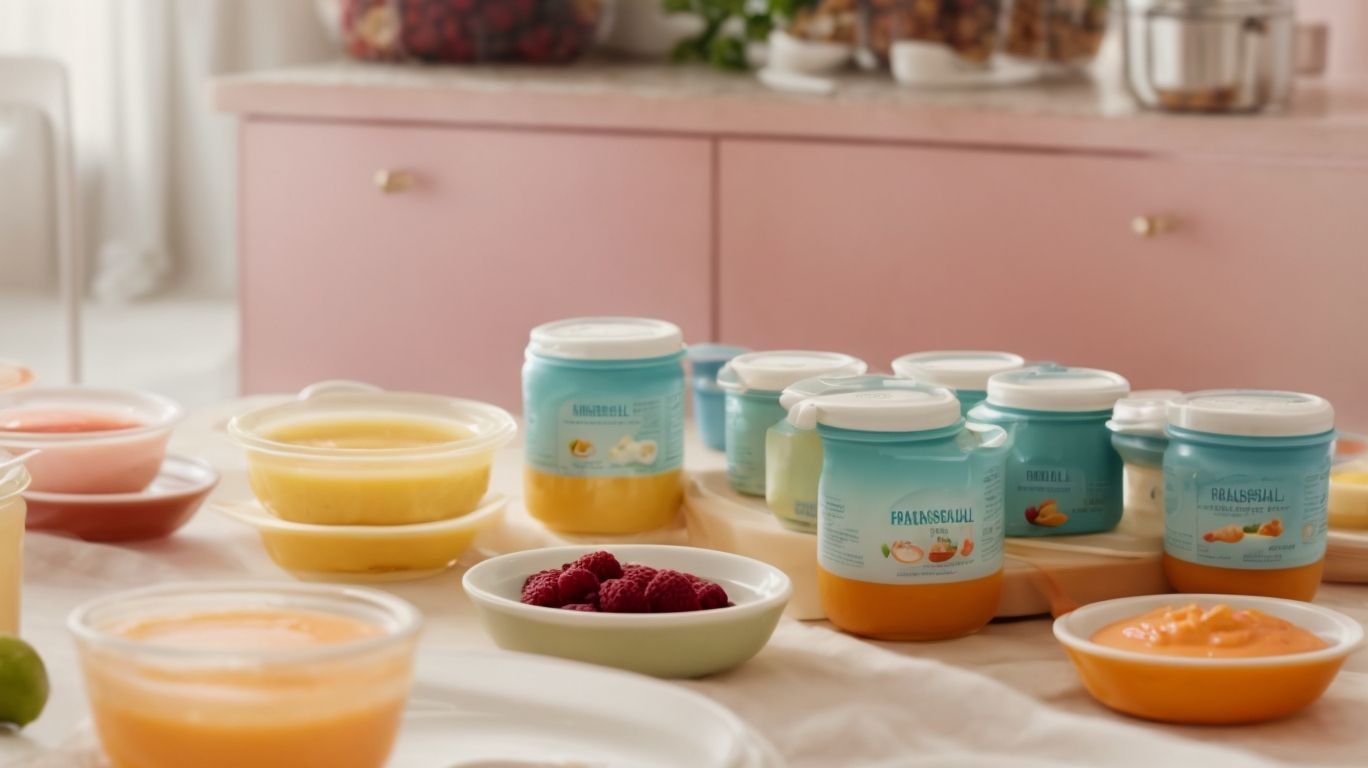
Credits: Poormet.Com – Mason Williams
When introducing quinoa to babies, it’s important to take precautions such as starting with small amounts, consulting with a pediatrician, and avoiding added salt and sugar.
Safety is paramount when introducing new foods to infants.
Begin with a tiny portion to test for any allergic reactions, as quinoa contains potential allergens. Your pediatrician can offer guidance on how to incorporate quinoa into your baby’s diet safely.
It’s crucial to watch out for added sugars and salt, which are not suitable for babies’ delicate digestive systems. Always follow your doctor’s advice and monitor your baby’s reactions closely as you introduce new foods.
Start with Small Amounts and Monitor for Allergic Reactions
Begin by offering small amounts of quinoa to babies and observe for any potential allergic reactions before increasing the quantity.
Quinoa, a highly nutritious grain, is a great choice for introducing essential nutrients to your baby’s diet.
Allergens such as quinoa are not common in baby’s diets but it’s always important to be cautious. It is recommended to check for any family history of allergies before introducing quinoa to your baby. Start with a few teaspoons of cooked quinoa mixed with breast milk or formula and gradually increase the quantity based on your baby’s tolerance.
Consult with Pediatrician Before Introducing Quinoa
Consulting with a pediatrician before introducing quinoa to babies is recommended to ensure it aligns with their health needs and dietary requirements.
Quinoa, often referred to as a superfood, is packed with essential nutrients like protein, fiber, and various vitamins and minerals that can benefit a baby’s overall growth and development. It is a great source of plant-based protein, which is essential for muscle and tissue growth. The fiber content in quinoa can aid in digestion and promote a healthy gut. Quinoa is also rich in antioxidants, helping to boost the immune system and protect against illnesses.
Avoid Adding Salt and Sugar to Quinoa for Babies
When preparing quinoa for babies, it’s crucial to avoid incorporating salt and sugar to maintain the dish’s natural flavors and nutritional integrity.
Instead of salt and sugar, you can enhance the flavor of baby food quinoa using natural ingredients like baby-safe herbs and spices or homemade vegetable broth. Incorporating freshly squeezed citrus juice can also add a delightful tanginess without compromising on health. Remember that babies’ taste buds are still developing, so keeping the flavors mild yet enjoyable is key. You can introduce your little one to a variety of flavors gradually by incorporating a medley of steamed veggies, fruits, and mild seasonings into the quinoa dishes.
Frequently Asked Questions
1. How do I cook quinoa for my baby?
To cook quinoa for your baby, first rinse the quinoa under cold water to remove any bitterness. Then, combine 1/4 cup of quinoa with 1/2 cup of water in a small pot. Bring it to a boil, then reduce the heat and let it simmer for 15 minutes. Fluff with a fork and let it cool before serving to your baby.
2. Can I add any seasonings or spices when cooking quinoa for my baby?
It is recommended to keep the quinoa plain when cooking for babies, as their taste buds are still developing. However, you can add a pinch of salt or a small amount of cinnamon for some added flavor if desired.
3. How old does my baby have to be to start eating quinoa?
Most babies can start eating quinoa around 8-10 months old, but this may vary depending on your baby’s individual development and dietary needs. Consult with your pediatrician before introducing any new foods to your baby.
4. Can I use quinoa in purees for my baby?
Yes, you can blend cooked quinoa with fruits or vegetables to make a nutritious and flavorful puree for your baby. Just make sure the puree is smooth and easy for your baby to eat.
5. How long can I store cooked quinoa for my baby?
Cooked quinoa can be stored in the refrigerator for up to 3 days. For longer storage, you can freeze it in an airtight container for up to 3 months.
6. Are there any precautions I should take when cooking quinoa for my baby?
It is important to make sure the quinoa is thoroughly cooked and soft before serving to your baby. Also, be aware of any possible allergies your baby may have to quinoa, and introduce it in small amounts at first.

